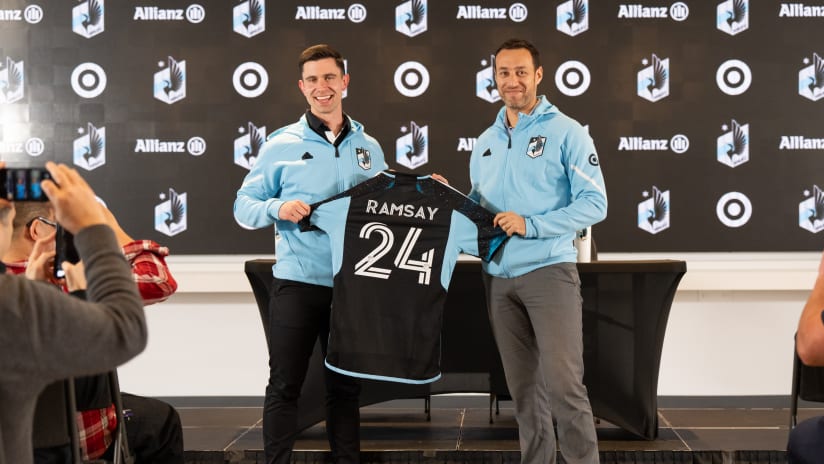Over the past few seasons, there have been games where Minnesota United has found itself needing to preserve a slim lead. In those situations, Head Coach Adrian Heath has sometimes opted to bring in an extra defender for an attacker and had the team defend in a low block. It’s often worked, but it’s also occasionally led to a late goal. At these times, Heath has pointed out that sometimes the extra defender can perversely cause problems for the team defending. Players can feel like it’s enough to just drop deep and instead of being useful, they just end up in the way. They switch off and instead of being in the box with purpose, they’re just taking up space.
Based on the recent result against LAFC — a 2-0 win on the road with the team playing a 3-5-2 with wingbacks where the scoring opportunities came almost strictly from long through balls to attackers Darwin Quintero and Mason Toye on the counterattack — it seems possible that the above can also be true on offense.
Heath, like many modern soccer coaches, favors a 4-2-3-1. It’s a look that provides good balance between attack and defense, allowing the fullbacks to get up in attack while the center mid drops between the centerbacks and giving plenty of options in the midfield with two wingers often tucking inside those fullbacks deep in the opponent’s third. It’s designed to allow teams to do their damage with the ball. When it’s worked, it’s led to forward Angelo Rodriguez holding up play at the edge of the box before sending the ball back to trailing midfielders making secondary runs or out wide for defender Romain Metanire to send in pinpoint crosses.
But as Minnesota United’s record has improved over the course of the season, more and more teams have come into Allianz Field — and even occasionally on the road — prepared to bunker in and take away the middle. This has led to a plethora of crosses for the Loons in recent games that have failed to find a friendly head in a box stuffed to the gills with opposing defenders. They have created chances and finished them, but many of them have gone begging either through a lack of composure in the finish or because of low quality to begin with. The attack began to look too deliberate.
In Los Angeles, though, Minnesota flipped the script. The formation actually played mostly like a 5-3-2 with the outside defenders more committed to defense than attack. As many teams have discovered this season, LAFC is too good to play on an even footing in the open field, so Minnesota dug in. They absorbed the home side’s energy and then re-directed it swiftly and instinctively, with Mason Toye scoring a brace on goals in the 25th and 29th minutes, both coming on the counterattack.
This approach left it up to the attackers to do more on their own, but it also gave them more cover to harass defenders when they had the ball and unlocked assets like Quintero’s handles and Toye’s speed that have occasionally gotten lost in a more crowded front line. It also allowed Jan Gregus — and later Kevin Molino, who came in for Quintero early in the second half — to leverage his ability to hit long balls in behind, leading to his team-leading ninth assist on the season. Additionally, LAFC’s defenders were often left flat-footed, defending large swaths of space that were suddenly overrun by the long strides of Toye.
It remains to be seen if this kind of tactical shift can be a consistent recipe for success. Against a less aggressive team, the choice to sit in could lead to some of the same switching off and defensive congestion that can undo a team with so many defenders. It’s also difficult to play from behind with this approach, and the counterattacks it can set up are more or less the only avenue of attack. As was on display in the second half once MNUFC had secured a two-goal lead, it’s difficult to build up the offense: you’re basically exchanging extremely short, direct opportunities to get in on goal for being forced into defending in your own half or even final third for much of the game.
At the end of the day, one formation is not better than another in every situation. Switching away from what had become a somewhat turgid offense where players struggled to get themselves into just the right channels in favor of one that simply demanded they beat their defenders paid off in Los Angeles. But the real value in the Loons’ win against LAFC might be the lesson that in the right situation, wholesale change in and of itself can be a more effective cure for a team’s ills than any amount of tinkering.





